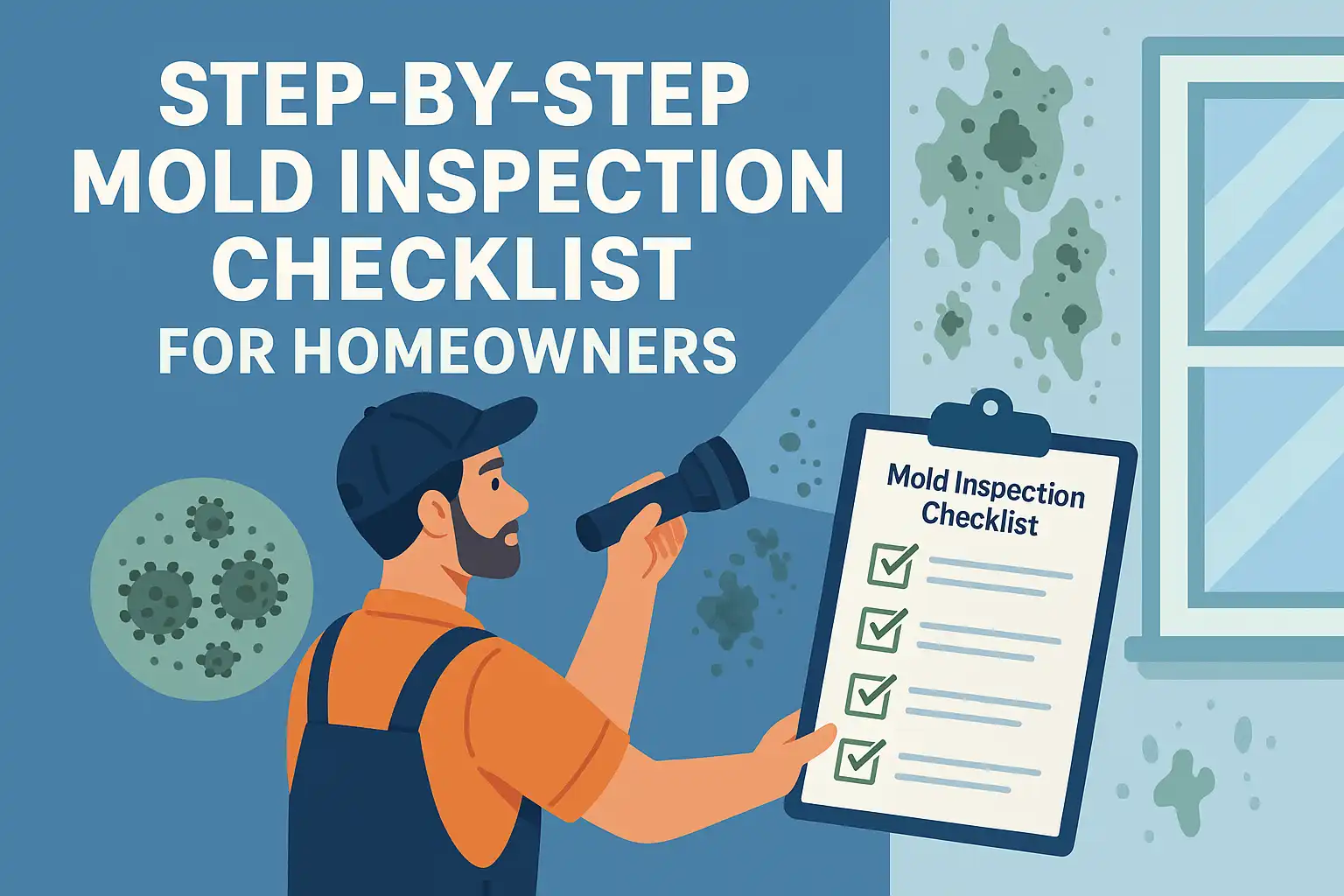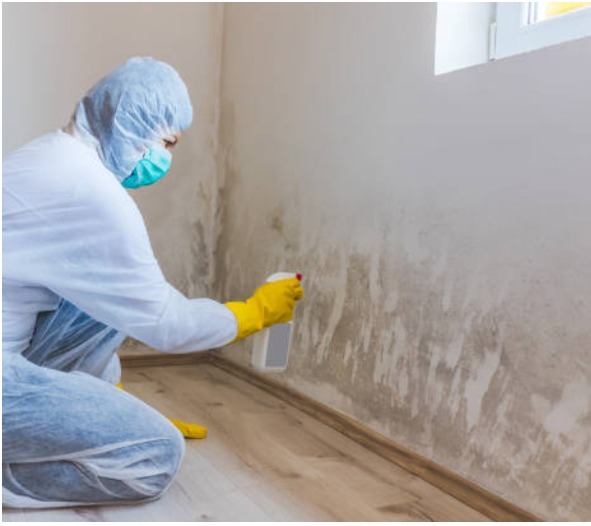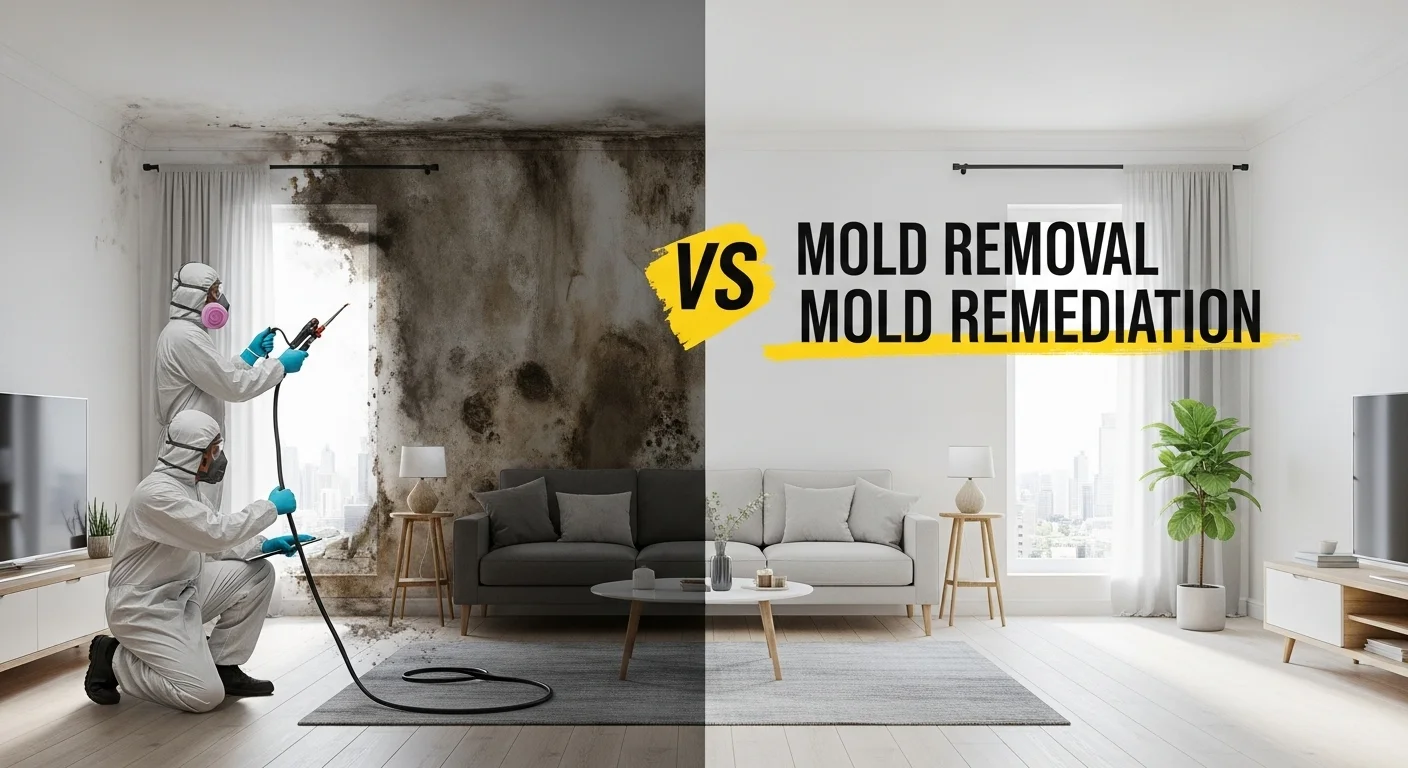Mold Cleaning Mistakes Tallahassee Homeowners Must Avoid and What to Do Instead
Many people try to clean mold themselves, but even with the best intentions, simple mistakes can make the problem worse. Using the wrong cleaner, ignoring hidden moisture, or painting over mold may seem like quick fixes, but they allow spores to spread and return even stronger.
This guide breaks down the most common mold cleaning mistakes homeowners make and explains how to avoid them. You’ll also learn safer, more effective steps to protect your home, your health, and your long-term investment. Understanding these mistakes will help you take action the right way. So, let’s get started.

Mistake #1: Ignoring Early Signs of Mold
Many homeowners mistake early mold for simple dirt or mildew. The discoloration looks harmless at first. But behind the surface, colonies may already be spreading through drywall, insulation, or flooring. Mold also releases spores into the air, which can circulate through HVAC systems and reach every corner of the home.
Delaying action doesn’t just damage property. According to the Centers for Disease Control and Prevention (CDC), mold exposure can trigger asthma attacks, allergic reactions, and sinus problems for people with weakened immune systems. Breathing mold spores over time can lead to chronic respiratory issues.
Another overlooked sign is odor. A musty smell usually points to hidden moisture and microbial growth. Covering it with air fresheners or candles won’t solve the problem. Professional tools like thermal imaging and moisture meters are often needed to locate concealed mold behind walls, under carpets, or in crawl spaces.

What You Should Do Instead
Mistake #2: Using Bleach or Harsh Chemicals
When most people discover mold, the first reaction is to grab a bottle of bleach. It feels like the fastest way to disinfect and make the stain disappear. But bleach is not the solution for household mold problems. In fact, using it often makes things worse.
Bleach works only on the surface. It can lighten dark patches on tile or hard, non-porous surfaces, but it does not penetrate porous materials like drywall, wood, or carpet. That means mold roots remain alive beneath the surface, ready to grow back once conditions are right. Bleach is also not recommended according to the U.S. Environmental Protection Agency (EPA), for routine mold cleanup inside homes.
It can affect your health due to the harsh chemicals used in it. Strong fumes irritate the eyes, skin, and respiratory system. For people with asthma or allergies, exposure can trigger serious reactions. Bleach also reacts poorly when mixed with other household cleaners, releasing dangerous gases that can harm indoor air quality. Instead of masking the problem, focus on methods that actually stop mold growth.
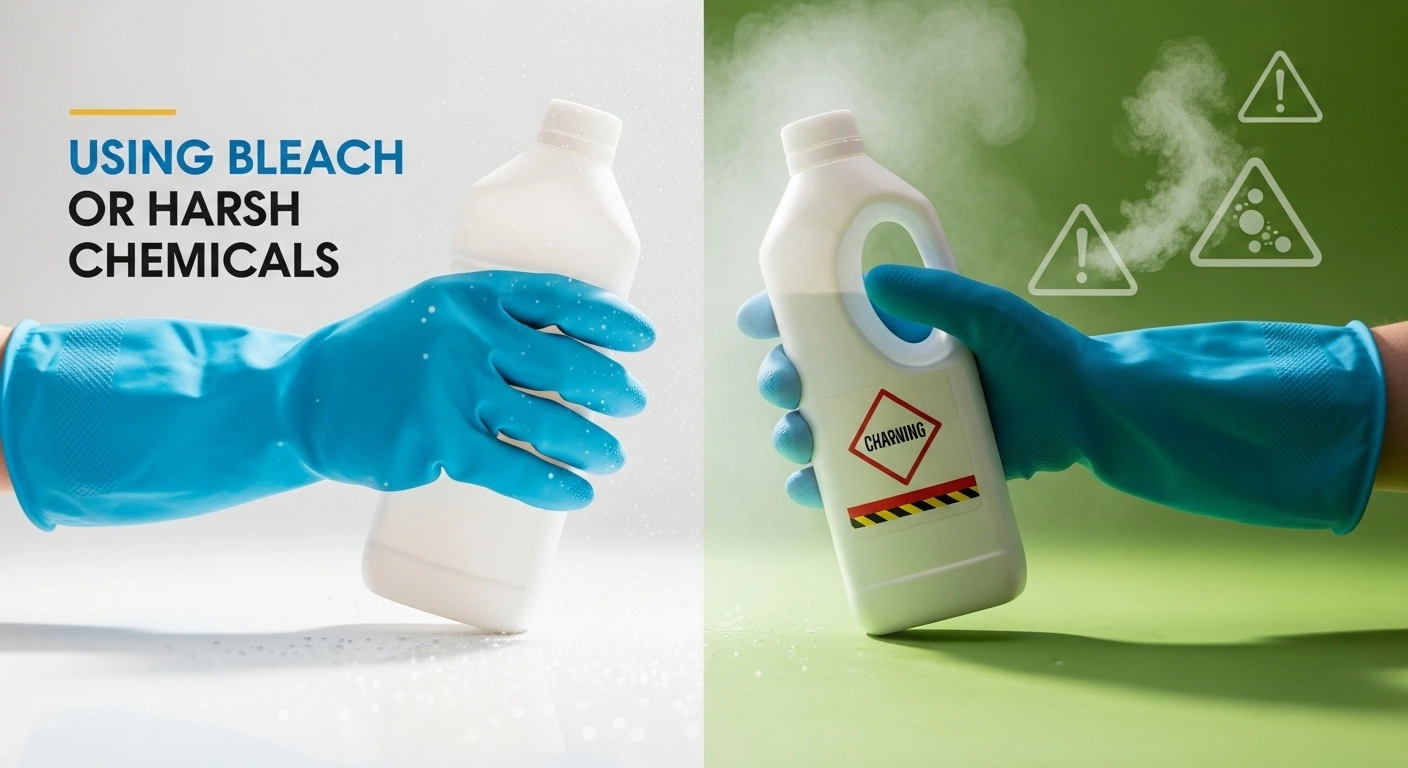
What You Should Do Instead
Mistake #3: Painting Over Mold
Painting over mold might seem like an easy fix. The surface may look clean but paint does not kill mold. It only hides the mold and within weeks the stains bleed back through, often worse than before.
Mold is a living organism. It feeds on organic materials like drywall paper, wood, and carpet backing. When you apply paint or primer without removing the mold first, you seal in moisture and give spores a protected environment to keep growing. This not only damages the painted surface but also weakens the building material underneath.
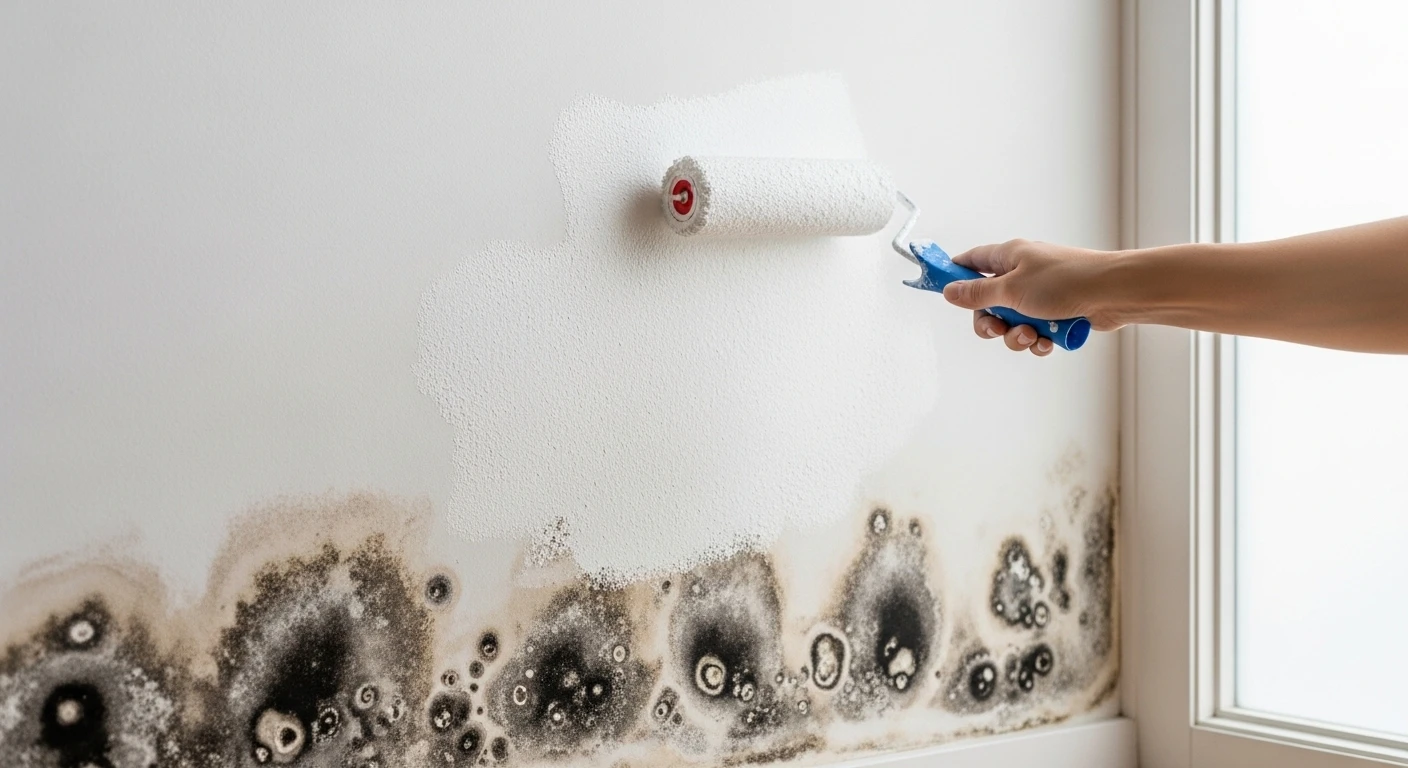
What You Should Do Instead
Painting should be the last step in restoration, not the first attempt at cleanup. Homeowners who skip proper removal end up paying more later when the mold resurfaces and causes deeper structural and health problems.
Mistake #4: DIY Mold Removal Without Containment
Tackling mold yourself might feel like a cost-saving move, but without proper containment, you risk spreading the problem throughout your home. Mold spores are microscopic. The moment you start scrubbing, vacuuming, or tearing out materials, spores become airborne. Without barriers or filtration, they travel through open rooms and HVAC systems, settling in new areas.
Many homeowners use standard vacuums or cleaning rags. The problem is, regular vacuums do not have HEPA filtration. Instead of trapping spores, they push them back into the air. Likewise, wiping mold with a damp cloth often smears contamination across a larger surface. These mistakes allow a small issue to become a widespread infestation.
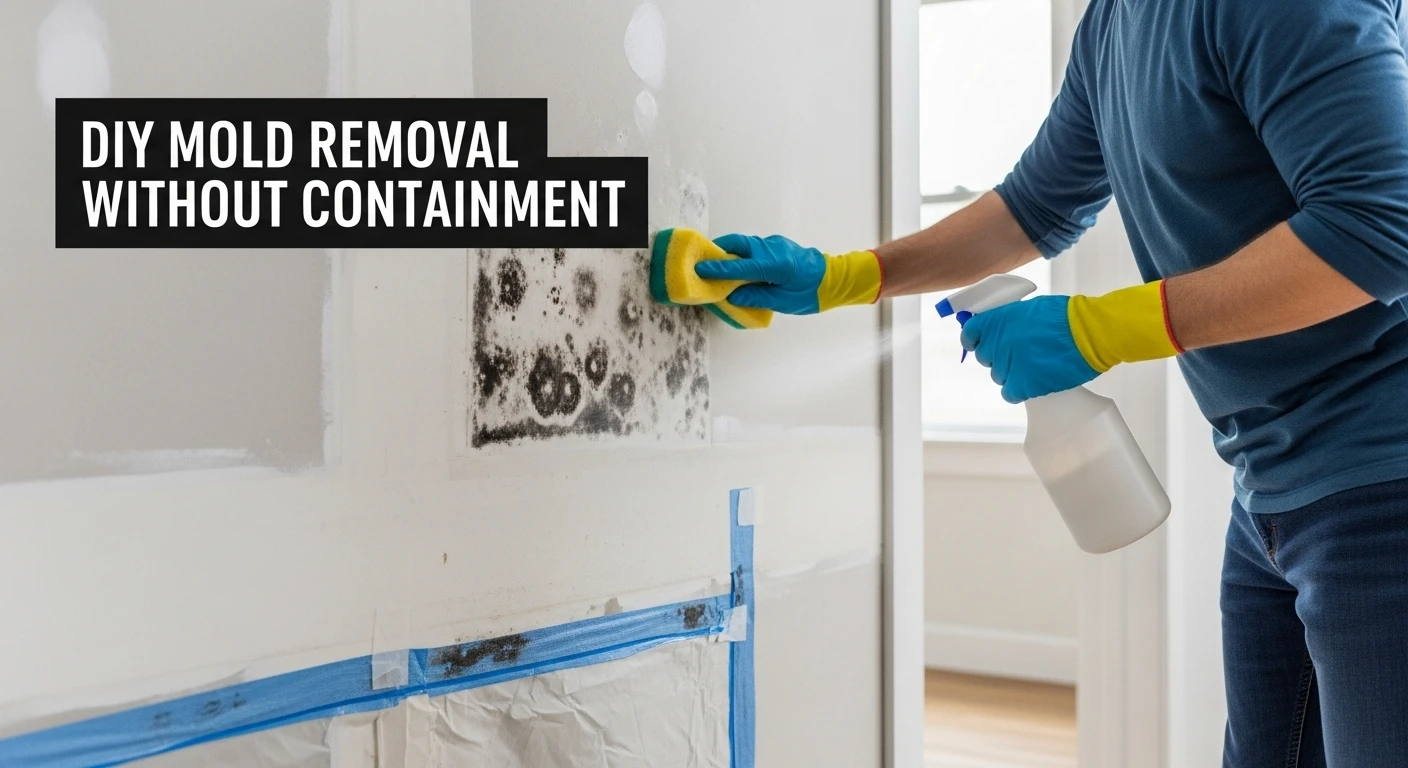
What You Should Do Instead
Mistake #5: Masking Mold Odors With Air Fresheners
A musty smell in the home is often the first warning sign of mold. Many homeowners try to cover it up with air fresheners, scented candles, or cleaning sprays. While these products make the air smell pleasant for a short time, they do nothing to solve the underlying problem. Mold spores remain active and continue to spread, even when the odor is masked.
Relying on fragrance can also delay proper action. The smell of mold signals that moisture is present somewhere—behind walls, under flooring, or inside HVAC ducts. Ignoring this sign allows hidden colonies to grow larger and harder to remove. According to the Centers for Disease Control and Prevention (CDC), mold can cause health issues even if you can’t see it. That means a fresh scent in the air does not make your home safer.
Air fresheners themselves may introduce new problems. Many contain volatile organic compounds (VOCs) that irritate the lungs and worsen symptoms for people with asthma or allergies. Covering up one source of poor air quality with another can make sensitive individuals feel even worse.
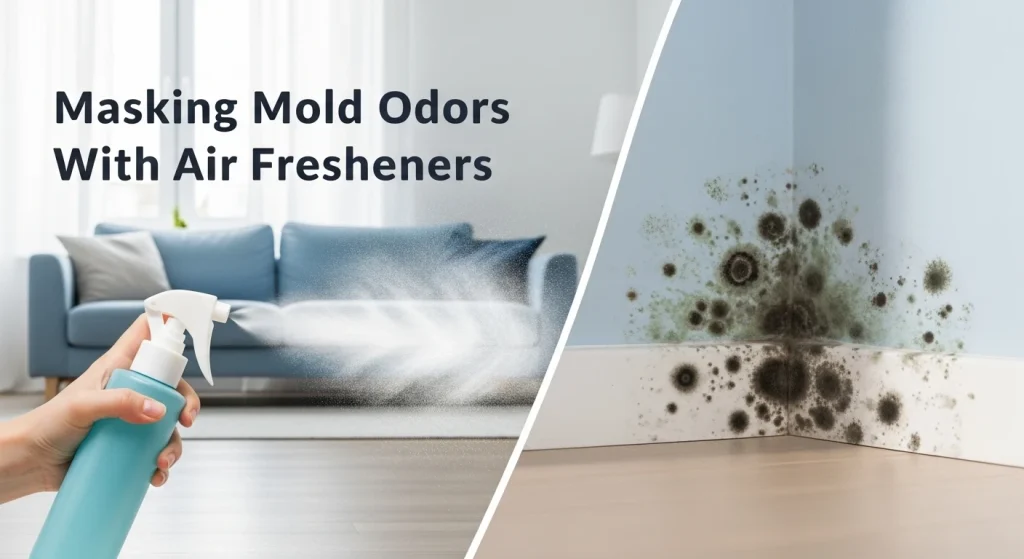
What You Should Do Instead
A clean scent is not the same as clean air. Solving mold-related odors requires eliminating the source, not just covering it up.
Mistake #6: Delaying Professional Help
Many homeowners wait too long before calling a mold professional. At first, the problem looks small—just a few dark spots on a wall or ceiling. But in Tallahassee’s humid climate, mold doesn’t stay small for long. The longer you wait, the deeper it spreads into drywall, insulation, and wood. What could have been a simple repair often turns into a costly remediation project.
Waiting too long can even affect your insurance coverage. Many policies require homeowners to take prompt action to prevent further damage. If you ignore visible mold or delay repairs, your insurer may deny claims for remediation costs. That leaves you responsible for the full expense of cleanup and repairs.
What You Should Do Instead
Mistake #7: Not Fixing the Moisture Source
Cleaning visible mold without addressing the cause of moisture is like mopping up water while leaving the faucet running. The mold may disappear for a few days, but it will always come back. Mold growth depends on moisture, and in Tallahassee’s humid climate, sources can range from roof leaks to poor ventilation.
Many homeowners scrub away stains but overlook hidden problems. A slow plumbing leak inside a wall, condensation on cold air ducts, or standing water in a crawl space all create perfect conditions for mold. If the underlying moisture issue continues, colonies regrow quickly, often spreading farther than before.
Moisture control is the key to preventing mold. Without fixing leaks or reducing humidity, no amount of cleaning will provide a long-term solution.
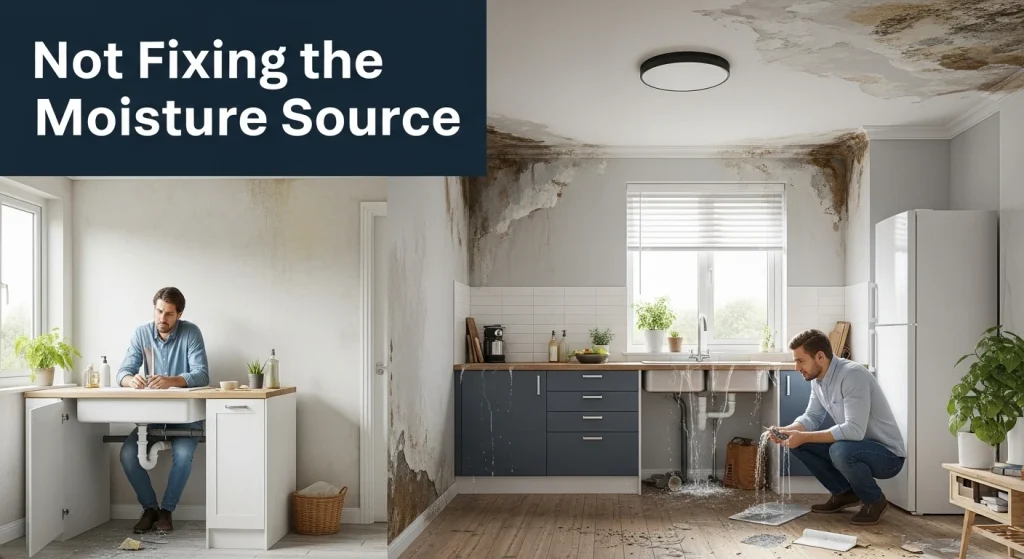
What You Should Do Instead
Mold is a symptom, not the root problem. Eliminating the source of moisture ensures your cleanup efforts last and helps protect your home from recurring damage.
Mistake #8: Choosing the Wrong Mold Remediation Company
Not all companies that claim to handle mold are qualified to do the job correctly. Some homeowners choose the lowest bid or hire contractors without checking credentials. This often leads to incomplete cleanup, hidden contamination, or even recurring mold problems.
One of the most common red flags is the “fog-only” treatment. These companies spray a chemical or mist into the air, promising it will kill mold everywhere. While fogging may reduce odors temporarily, it does not remove contaminated drywall, insulation, or carpet where colonies thrive. According to the Institute of Inspection, Cleaning and Restoration Certification (IICRC), proper remediation requires physical removal of mold-affected materials—not just surface treatments.
Another mistake is failing to check licensing and insurance. In Florida, mold assessors and remediators must hold state licenses through the Department of Business and Professional Regulation (DBPR). Hiring someone unlicensed puts you at risk of poor work and may void insurance claims.
What You Should Do Instead
Choosing the right company is as important as addressing the mold itself. Licensed, trained, and insured professionals provide not only effective cleanup but also peace of mind that your home is safe.
Conclusion
Mold problems in Tallahassee are more than an inconvenience—they’re a direct result of the region’s humid climate, frequent storms, and hidden household moisture. Too often, homeowners make mistakes that worsen the problem. Each of these missteps allows mold to spread deeper, damage property, and create health risks for your family.
The good news is that most of these mistakes are preventable. The key is staying proactive. Inspect vulnerable areas regularly, address leaks immediately, and take musty odors seriously. And when the issue goes beyond a small surface spot, bring in a qualified remediation company to restore your home safely.
Avoiding the common mistakes outlined here doesn’t just save money—it protects your health and gives you peace of mind. With the right steps, you can stay ahead of mold and keep your home strong against the challenges of Florida’s climate.
FAQs
How fast can mold spread in a Florida home?
Mold can begin growing within 24–48 hours after water damage. That’s why immediate drying and moisture control are critical.
Can I remove the mold myself?
Yes, but only in limited cases for small areas under 10 square feet, using detergent and water on non-porous surfaces. For larger infestations, hidden mold, or recurring problems, you should hire a licensed Florida remediation contractor.
Does bleach kill mold completely?
No. Bleach only removes surface stains and cannot penetrate porous materials like drywall or wood.
Is it safe to stay in a house with mold during cleanup?
It depends on the size and severity of the problem. Small, contained cleanup projects may not require relocation. But if the mold is widespread, or if sensitive individuals (children, elderly, or those with asthma) live in the home, it’s safer to stay elsewhere until remediation is complete.
What kills mold permanently?
The only permanent solution is removing the moisture source and physically eliminating contaminated materials. Cleaning agents and biocides may reduce growth temporarily, but without fixing leaks, humidity, or drainage issues, mold will return.
How much does professional mold removal cost in Tallahassee?
Costs vary widely based on the size of the affected area, materials involved, and whether HVAC systems are contaminated. Small projects may cost a few hundred dollars, while larger remediation jobs can run into thousands.
Will insurance cover mold remediation in Florida?
Many policies in Florida include mold exclusions or strict coverage limits. Insurers usually require homeowners to take quick steps to prevent further damage. Always document the problem with photos, report water damage promptly, and check your policy for mold sub-limits.
What’s the difference between mildew and black mold?
Mildew is a surface fungus that usually looks powdery and grows on damp surfaces like shower tiles. Black mold (often Stachybotrys chartarum) grows deeper into building materials, releases more spores, and poses greater health risks. Both require cleanup, but black mold often calls for professional remediation.




